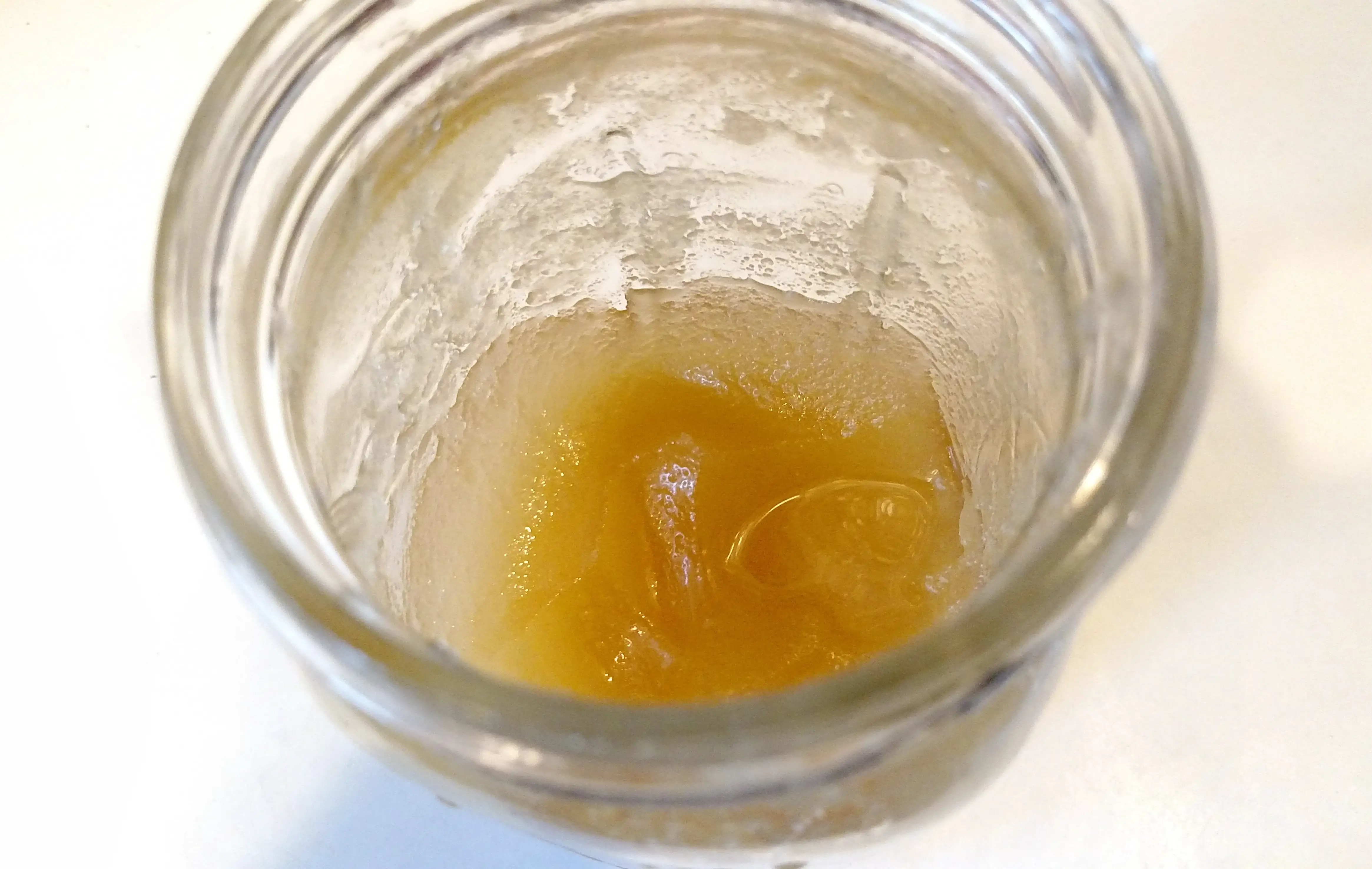Crystallized honey is still good to use. Some people believe that once honey crystallizes, this is a sign that it’s gone bad and needs to be thrown away. However, the opposite is true.
Crystallization happens over time naturally or when the temperature drops as a way to preserve good honey. As a matter of fact, only raw unfiltered honey will form these crystals.
Factors Affecting the Crystallization of Honey
Three factors will make your honey more prone to crystallization.
Temperature
Honey will crystallize if the temperature drops below 10°F. This means that it can happen even if you’re keeping honey in a cabinet or if the temperature drops in the colony. Storing your honey in a warm place will prevent crystallization from happening too often.
Ratio of Glucose to Fructose
Honey is made of more than 70% of carbohydrates and only 20% of water. As a sugar-saturated solution, crystals will start to form over time. When the temperature drops, the process of crystallization happens faster.
The shape of honey crystals might be smooth or rough and gritty. This is due to the fact that honey contains two types of sugar; fructose and glucose.
Fructose is more soluble and will produce smaller and smoother crystals. Glucose, on the other hand, is less soluble and will give your crystallized honey this gritty texture.
The higher the content of glucose in your honey, the faster it will crystalize even if the temperature doesn’t drop significantly. Crystallization can happen even when honey is still in the comb if it contains a higher content of glucose.
The ratio of glucose to fructose in the honey depends on the plants the bees are feeding on. This means that some types of honey will be more resistant to crystallization because they don’t have a high content of glucose.
Experimenting with different honey types will help you determine the kinds that are more prone to crystallization. Blueberry honey will not crystallize as much as Alfalfa honey.
Pollen
Finding pollen in honey is normal. As the bees feed on nectar they get covered in pollen which might naturally find its way to your honey. These small particles will facilitate crystallization because there are small particles on which the crystals can grow.
However, nowadays a lot of honey manufacturers filter honey to make sure that it’s pollen-free. This pollen-free honey will be brighter in color and more stable because it’s less prone to crystallization. However, filtered honey has already lost some of its basic features.
You don’t know which plants bees have been feeding on. Filtered honey can also be mixed with other types and you won’t be able to detect it.
What to Do with Crystallized Honey
There are two things to do when your honey crystallize. First is to use it as it is.
Crystallized honey still retains all the nutrients and benefits of liquid honey. It can be added to food and drinks and will still taste delicious.
As a matter of fact, lots of people agree that crystallized honey is easier to spread due to its creamy consistency. If you love a crunchy texture, it might be the right choice for you.
If you’re not a big fan of crystallized honey, you can thaw it and return it back to a liquid state. Here is how to do it right.
- Keep your honey in a glass container. It’s more durable and it will maintain the state of honey for long.
- If the honey crystallizes, put the jar in a bowl of warm water. This will thaw honey and return it to a crystal-free state.
- Avoid using the microwave to heat your honey. Overheating your honey isn’t recommended and the honey won’t be heated evenly.
- After you’ve thawed your honey, it will naturally crystallize again. Reheating your honey several times isn’t recommended as it can mess up with its natural nutrients.
If you don’t like the texture of crystallized honey, you can try heating a small batch. This way you can guarantee that the rest of your honey won’t get spoiled as you heat it several times.
Using Hot Water to “Decrystallize” Honey
Here are the right steps to turn your honey back to its viscous liquid consistency.
- Remove the lid of your honey jar.
- Place it in an empty bowl.
- Heat some water, but don’t let it reach the boiling point.
- Fill the bowl with water that covers half or two-thirds of the jar.
- Stir the honey to help move the crystals.
- Once the honey is smooth, seal the jar and store it in a cool place.
Storing your honey in a cool dry location will minimize the probability of crystallization. Make sure that you’re using airtight containers that are perfectly sealed. Subjecting honey to high temperatures will affect its nutritional content.


![3 Big Mistakes Beginner Beekeepers Make [And How To Avoid Them!]](https://beekeepingabc.com/wp-content/uploads/2020/11/3-mistakes-beginner-beekeepers-make-90x75.jpg)

![Move over ducks, Queen Bees quack too! [Here’s Why]](https://beekeepingabc.com/wp-content/uploads/2020/06/queen-bee-90x75.png)
![The Flow Hive 2 Review [ Vs. The Classic Flow Hive]](https://beekeepingabc.com/wp-content/uploads/2020/02/Flow-Hive-2-90x75.jpg)
![How Bees Fly [10 Facts About How, When, and Why]](https://beekeepingabc.com/wp-content/uploads/2019/12/A-Bee-Flying-90x75.jpg)